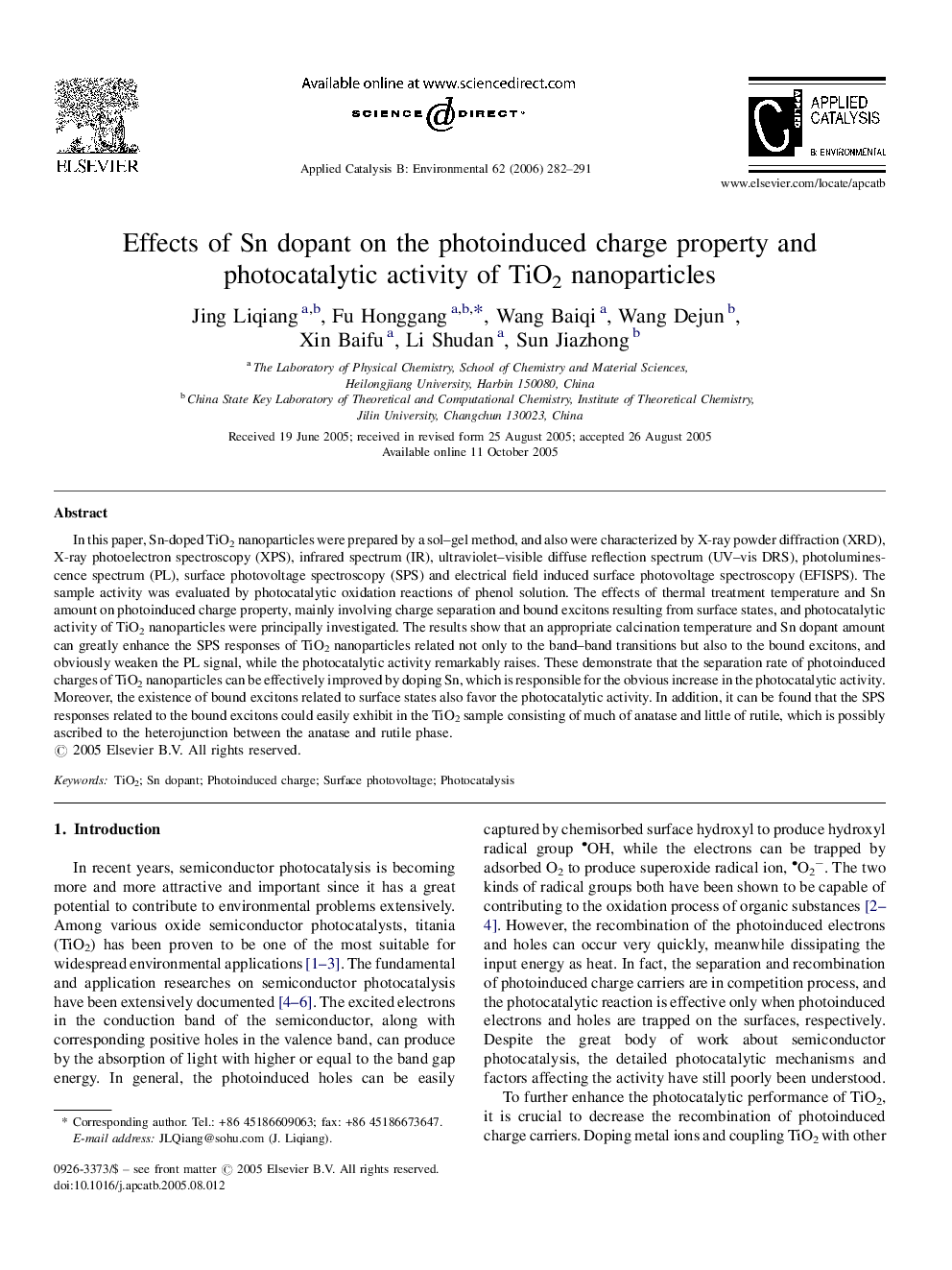| Article ID | Journal | Published Year | Pages | File Type |
|---|---|---|---|---|
| 49067 | Applied Catalysis B: Environmental | 2006 | 10 Pages |
In this paper, Sn-doped TiO2 nanoparticles were prepared by a sol–gel method, and also were characterized by X-ray powder diffraction (XRD), X-ray photoelectron spectroscopy (XPS), infrared spectrum (IR), ultraviolet–visible diffuse reflection spectrum (UV–vis DRS), photoluminescence spectrum (PL), surface photovoltage spectroscopy (SPS) and electrical field induced surface photovoltage spectroscopy (EFISPS). The sample activity was evaluated by photocatalytic oxidation reactions of phenol solution. The effects of thermal treatment temperature and Sn amount on photoinduced charge property, mainly involving charge separation and bound excitons resulting from surface states, and photocatalytic activity of TiO2 nanoparticles were principally investigated. The results show that an appropriate calcination temperature and Sn dopant amount can greatly enhance the SPS responses of TiO2 nanoparticles related not only to the band–band transitions but also to the bound excitons, and obviously weaken the PL signal, while the photocatalytic activity remarkably raises. These demonstrate that the separation rate of photoinduced charges of TiO2 nanoparticles can be effectively improved by doping Sn, which is responsible for the obvious increase in the photocatalytic activity. Moreover, the existence of bound excitons related to surface states also favor the photocatalytic activity. In addition, it can be found that the SPS responses related to the bound excitons could easily exhibit in the TiO2 sample consisting of much of anatase and little of rutile, which is possibly ascribed to the heterojunction between the anatase and rutile phase.
